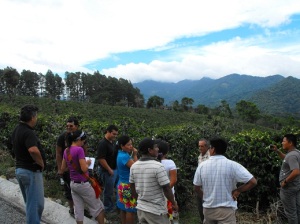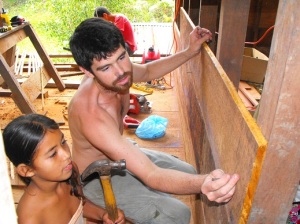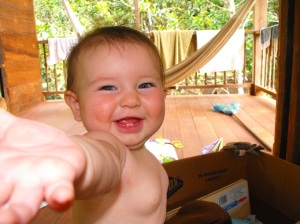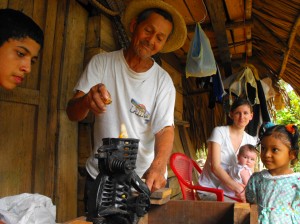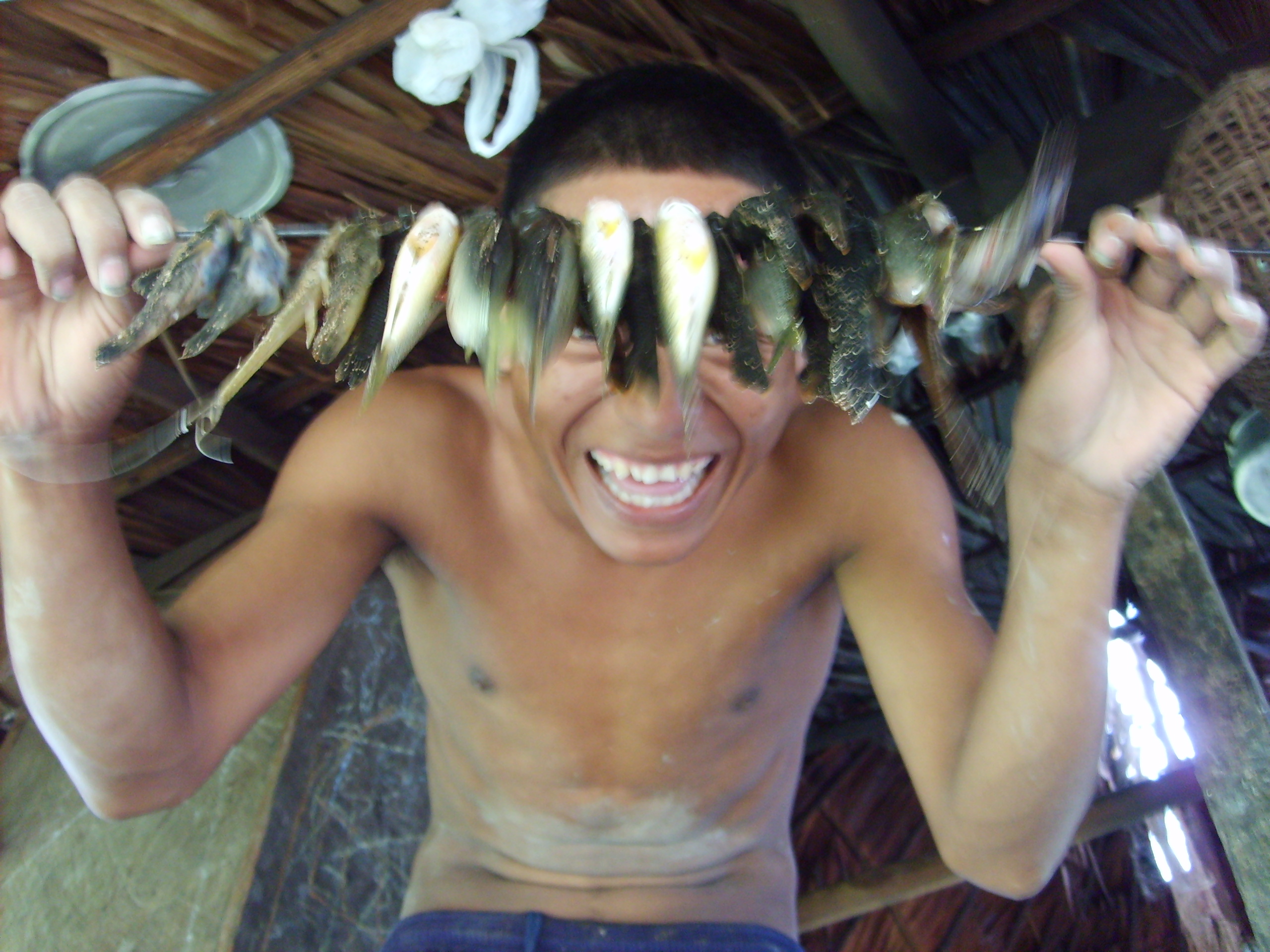El Dorado, the elusive city of gold in South America, has been discovered! More precisely, the anthropologists and archaeologists have confirmed that a thriving civilization thrived a long time ago in a land previously thought to be unthriveable. What was their secret?… Pyromaniacy, of course. They knew how to make and use charcoal.
Ok. Here it is in a tiny nutshell (skip this section if you suffer from history-induced narcolepsy). 500 years ago Spanish conquistadores heard tale of a people that rolled their chief in gold and washed him in a sacred lake. This gave rise to the legend of El Dorado, the city of gold, and the lustful search was on.

where is my goofy metal hat?
A capable young man named Francisco de Orellana was sent down the Amazon via the headwaters below the recently conquered Incan empire, becoming the first European to visit that area. He was almost dead when he started with 50 other starving men (they had crossed jungle for 6 weeks), and they almost died, repeatedly. He did not die and made it back to Spain eventually where he impressed the queen with tales of gold, spices, and a thriving civilization. Naturally, she told him to go exploit it.

I love my hat!
He tried and died and was immortally petrified. Some other dude went to the same area, returned to Spain, and said that Francisco was a big liar; there were just a few huts and some starving indians. So it remained that way until around the 1950s when some scientifically inclined folks started poking around in the Amazon soil and found some intriguing stuff. It was largely ignored for years because it did not suit some other scientists who puffed up and said, “Not possible!” because it contradicted their PhD thesis. It is now accepted that an enormous civilization did in fact exist right where ‘ole Franky had said, with earthworks on par with the pyramids and an unrivaled agriculture based on a man-made soil. Moreover, it was there continuously from the time of Christ and does not show the stratification typical of other societies that were established and re-established due to war. So where did they go? Apparently, Francisco’s parting handshake (or maybe just a distant cough) was all it took to introduce disease for which the natives had no immunity, and the jungle swallowed them and their handiwork up as quickly as it is capable of today… except for the amazingly fertile soil they created, which persists and is used by the smattering of locals to grow their food.
Recently, the term biochar was coined to represent charcoal as a soil additive. What does it do for the soil, you say? A lot. And more importantly, how is it made? A lot of ways. The jury is still out, but there is already a lot of information out there and major institutions such as the USDA, Cornell, and UGA are a few of the folks on the biochar train here in the U.S. If you’re interested, the International Biochar Initiative is a good place to start researching. There are also a lot of backyard operations for the home garden and orchard.
There are a lot of techy stainless steel contraptions out there, but, obviously, we’re looking for the most appropriate way to apply this age-old practice in rural Panama. In the spirit of “burn to learn,” we constructed a pit to make a little charcoal in Mountain Rest, SC. With the minimal application of science and forethought, this is what evolved:
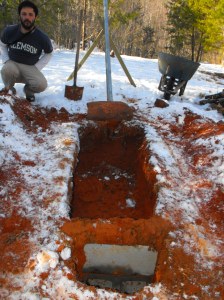
Step 1: dig a pit (on an incline) making an inlet on the lower end (we used a cinder block) and a chimney at the upper end (all we could find was 2" steel pipe). That's Nick of BarnabasX
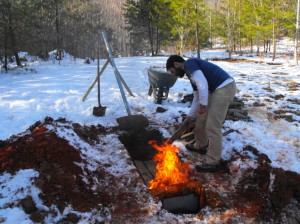
Step 2: build a little fire (for the burn to function in TLUD mode, we could’ve built the fire at the chimney end, but putting it at the inlet may have more potential to capture the gases (wood vinegar). We’re learning, remember.
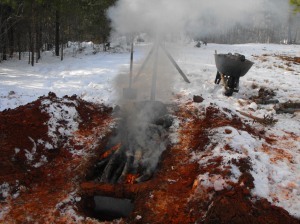
Step 3: Pack wood into the pit.
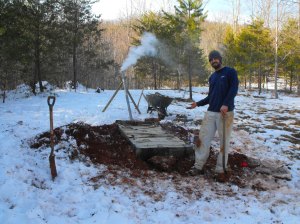
Step 4: Cover the pit, seal, insulate, and wait. (We had some old roofing and insulation laying around. The colliers of old Pennsylvania used leaves and dirt back in the day with a little different methodology. We're thinking rocks, banana leaves, and dirt for Panama). We ran out of time and patience, so we didn't get a complete char... but we learned.
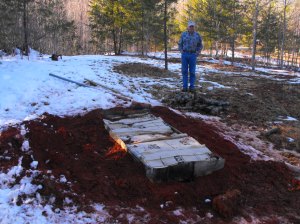
Step 5: Seal the inlet and chimney to stop the burn and allow to cool.
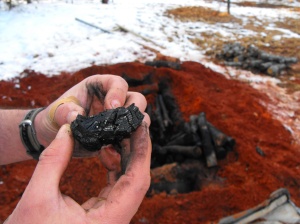
Step 6: Harvest the char!
 It feels like there´s hardly time to breathe so much has been going on… jobless and busier than ever. We received an injection of hope this morning when the local government representative visited an awaiting masse of community members at our request this morning to promise justice and action for the absurdity that has been our ¨road project¨ up until now; so there is renewed anticipation that the stretch of mud hole we live on will soon become a passable road (a good one for prayer). [corruption + incompetence = mosquitoes]
It feels like there´s hardly time to breathe so much has been going on… jobless and busier than ever. We received an injection of hope this morning when the local government representative visited an awaiting masse of community members at our request this morning to promise justice and action for the absurdity that has been our ¨road project¨ up until now; so there is renewed anticipation that the stretch of mud hole we live on will soon become a passable road (a good one for prayer). [corruption + incompetence = mosquitoes]
